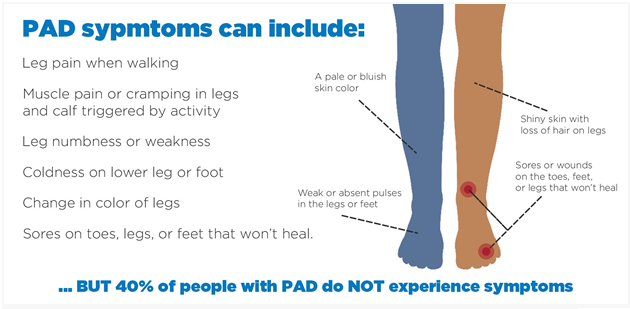The nurse is providing discharge education to a client who recently have insertion of a pacemaker/ICD. Which statement by the client should require further follow up by the nurse?
"I should never place items that generate magnetic fields over the pacemaker/ICD"
"I should not play contact sports or lift heavy objects for two months"
“I should inform dentists and health care providers about the pacemaker/ICD"
“I should never allow metal detectors at the airport or the use of household appliances"
The Correct Answer is D
While it is generally recommended to avoid close or prolonged exposure to strong magnetic fields, such as those generated by MRI machines, placing items that generate magnetic fields over the pacemaker/ICD, such as cell phones or certain medical devices, does not typically pose a risk. Therefore, it would be important for the nurse to clarify the client's understanding and provide accurate information about the precautions related to magnetic fields.
The other statements made by the client are generally correct and align with the typical recommendations for individuals with pacemakers/ICDs:
Avoiding contact sports or lifting heavy objects for a specified period of time after pacemaker/ICD insertion is usually advised to allow for proper healing and to reduce the risk of lead dislodgment or damage to the device.
Informing dentists and healthcare providers about the presence of a pacemaker/ICD is important so that they can take appropriate precautions during procedures or treatments that may involve electromagnetic interference or interfere with the device's functioning.
While it is generally advised to avoid close proximity to strong magnetic fields, such as those in airports or certain household appliances, it does not necessarily mean completely avoiding them. The nurse can clarify the specific recommendations regarding metal detectors at airports and the safe use of household appliances.
Nursing Test Bank
Naxlex Comprehensive Predictor Exams
Related Questions
Correct Answer is D
Explanation
Wear fitted closed toe shoes daily: It is important for clients with peripheral arterial disease to wear properly fitted closed toe shoes. This helps protect the feet from injury and provides support. Closed toe shoes also help maintain warmth and prevent heat loss, which is especially important for individuals with impaired circulation.
Let's review the other options and explain why they may not be appropriate:
Soak feet in warm water for an hour each day: Soaking the feet in warm water for a prolonged period can actually worsen symptoms in individuals with peripheral arterial disease. It can cause further dilation of blood vessels, leading to increased blood pooling and potential tissue damage. Therefore, soaking the feet for extended periods of time is not recommended.
Set heating pads on a low temperature: Using heating pads, especially at high temperatures, can be harmful to individuals with peripheral arterial disease. It can increase the risk of burns or thermal injury due to reduced sensation in the affected areas. Heating pads should be used with caution and on a low temperature setting, if necessary.
Use callus remover for corns or calluses: Individuals with peripheral arterial disease have reduced blood flow to the lower extremities, which can impair wound healing. It is important to avoid self-treatment of corns or calluses, as it can increase the risk of skin breakdown and infection. Clients should be advised to consult a healthcare professional, such as a podiatrist, for appropriate management of corns and calluses.

Correct Answer is B
Explanation
The action that will be included in the plan of care for a client in a hypertensive emergency receiving nifedipine is to use an automated noninvasive blood pressure machine to obtain frequent measurements.
In a hypertensive emergency, the client's blood pressure is severely elevated, requiring immediate treatment and close monitoring. Nifedipine is a calcium channel blocker commonly used to lower blood pressure in such situations. Continuous blood pressure monitoring is crucial to assess the effectiveness of the medication and ensure that the blood pressure is brought under control safely.
Organize nursing activities so that the patient has 8 hours of undisturbed sleep at night: While providing a conducive environment for sleep is important for overall patient well-being, in a hypertensive emergency, the priority is to manage and monitor the blood pressure. Sleep hygiene may not be the immediate concern in this situation.
Keep the hypertensive emergency NPO to prevent aspiration caused by nausea and possible vomiting: NPO (nothing by mouth) orders are typically implemented when there is a risk of aspiration or pending a procedure requiring anesthesia. In a hypertensive emergency, the focus is on managing blood pressure and ensuring appropriate hydration and nutrition as needed. NPO status may not be necessary unless specifically indicated for the individual patient.
Assist the patient up in the chair for meals to avoid complications associated with immobility: While mobilization and preventing complications associated with immobility are important aspects of care, in a hypertensive emergency, the primary focus is on managing blood pressure and stabilizing the client's condition. Mobilization may be appropriate once the blood pressure is under control and the client's condition permits.
Whether you are a student looking to ace your exams or a practicing nurse seeking to enhance your expertise , our nursing education contents will empower you with the confidence and competence to make a difference in the lives of patients and become a respected leader in the healthcare field.
Visit Naxlex, invest in your future and unlock endless possibilities with our unparalleled nursing education contents today
Report Wrong Answer on the Current Question
Do you disagree with the answer? If yes, what is your expected answer? Explain.
Kindly be descriptive with the issue you are facing.
